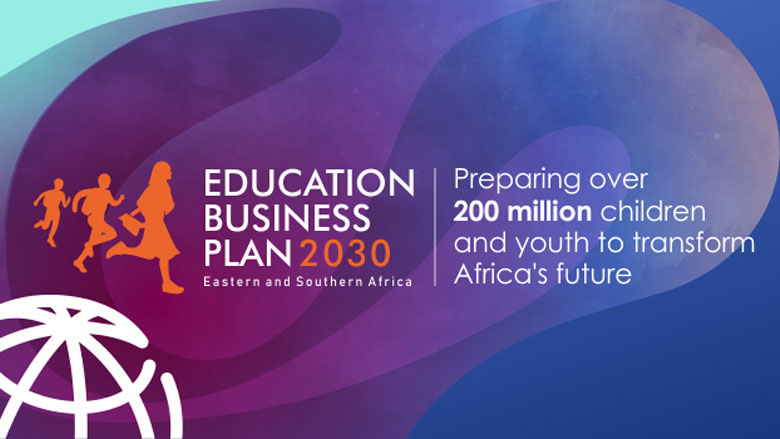In Eastern and Southern Africa, the landscape of education finance reflects a complex interplay of challenges and opportunities. While strides have been made to enhance access to education, financial barriers persist, hindering the region's progress. Insufficient public funding, coupled with economic disparities, poses a significant hurdle in ensuring equality of access to education for all. This issue is particularly pronounced in rural areas, where limited resources and infrastructure exacerbate the education finance gap.
The cost of inaction is very high for the region and the world. It is estimated that by 2030, 66 million children in the region will be out of school. By prioritizing effective and efficient financing for education, Eastern and Southern Africa can unlock the potential of its youth, fostering a brighter future and contributing to sustainable and inclusive development.
As of September 2024, the World Bank was engaged in 42 projects, allocating a total of $7.26 billion for education financing in the region.
Regional Strategy
In alignment with the Dar es Salaam Declaration, the World Bank’s Eastern and Southern Africa region is focusing on the following targets by 2030.
- Reduce learning poverty by 25% - This would enable an additional 19 million children at the end of primary school (10-year-olds) to read and write and enroll an additional 33 million out-of-school children.
- Increase access to secondary education for adolescent girls by 50% - This would ensure that an additional 11 million adolescent girls are in school.
- Equip youth to contribute to economic growth, climate response, and job creation – Provide training or jobs for an additional 10 million youth and equip 18 million more with digital skills necessary for jobs.
The Eastern and Southern Africa region is working with countries and partners to achieve these measures by focusing on four strategic areas that have shown progress:
1. Transforming learning spaces that encompass infrastructure, teaching, and technology
Ensuring that all children have access to school requires the creation of flexible and adaptable learning spaces. Technology can play a significant role in achieving this flexibility, enabling remote learning, and personalized instruction. In addition, learning spaces must be safe and resilient to climate changes, ensuring that school structures can withstand environmental challenges and provide a secure environment for children.
However, access alone is not sufficient. It is equally important to prioritize the quality of education, by focusing on recruiting more and better-trained teachers, ensuring sufficient provision of quality teaching and learning materials, enhancing policies and curricula to reflect the latest pedagogical research, and ensuring that that instruction is effective and inclusive.
2. Focusing on girls completing school
In Eastern and Southern Africa, close to 60% of girls are likely not to be enrolled in secondary school. Proximity to school and poverty are the two most critical determinants of timely enrolment and school completion for girls. Addressing these challenges, involve bringing learning closer to home with schools located within 2 kilometers, making school environment and learning experience safer and encouraging, providing remote and digital solutions, as well as solving financing gaps for secondary expansion in underserved areas.
3. Anticipating, Adapting and Responding to evolving labor markets
By 2050, Sub-Saharan Africa will have the largest and youngest workforce in the world. To tap into this immense potential, Africa’s young people need to be equipped with relevant skills to prepare them for current and future job opportunities. There is an opportunity for Technical and Vocational Education and Training (TVET) system to work more closely with the private sector to improve the quality and availability of skills needed for growth, as well as make better use of technology and other innovations and experiences/ lessons to improve skilling programs.
4. Pushing for large scale, programmatic operations, with and results-based financing
Evidence from well performing systems, such as Kenya, favors the importance of a longer-term and comprehensive approach to tackling the complex challenge of improving learning outcomes. The AFE Education Business Plan emphasizes the need for catalytic financing and results-based approaches. To maximize impact, the Plan proposes tailoring approaches based on country-specific contexts, and transitioning from smaller-scale initiatives to larger, nationwide programs. A step in that direction is the upcoming AIM4Learning (Advancing Innovative Methods to Promote Learning) Multi-Phase Programmatic Approach (MPA) that aims to support the region to adopt the latest innovations and technologies to tackle the learning crisis. It goes beyond old approaches, targeting either access or learning, to a more comprehensive approach that focuses simultaneously on rapidly increasing the number of children that go to school and improving the skills they acquire.

